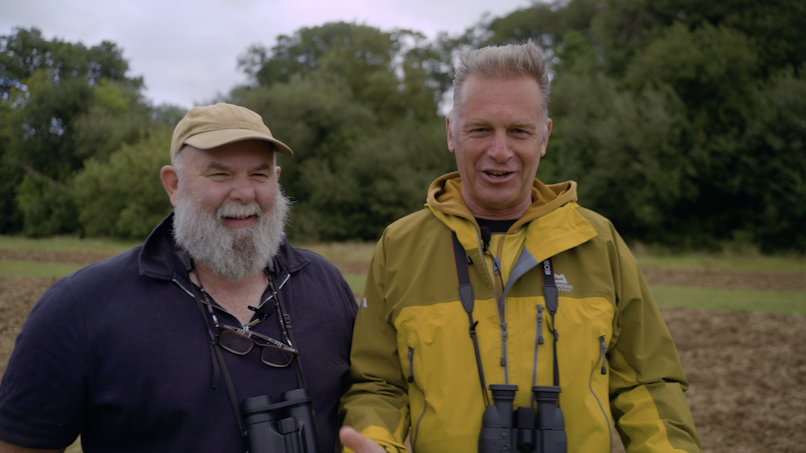Autumn Rewilding – Beavers, Scrapes and Raptors at Work
Autumn rewilding in action: Chris Packham and the team build beaver habitats, bird scrapes and raptor perches to boost British biodiversity.

Ecotalk, the best mobile network for nature, recently returned with Chris Packham to Downicary in Devon to meet with Derek Gow, who manages the site on behalf of the Green Britain Foundation’s Land Team. Though Downicary was once a uniform carpet of sheep-grazed turf, today’s vision is to transform it into a living tapestry of wildflowers, amphibian ponds, reptile refugia and insect-rich habitats.

Preparing the Canvas for Wildflowers
Derek and Tay have started by scarifying the grassland - a crucial first step in battling the “carpet of death” that smothers seed germination. Over decades of intensive grazing, the pasture had become dominated by grass, leaving precious little room for botanically diverse species. By mechanically raking and loosening that surface, they expose bare soil, creating ideal seedbeds for a bespoke mix of wildflowers.
Tay had spent recent weeks gathering seed from roadside verges and neighbouring meadows; yellow rattle to weaken the grass, knapweeds for structure, fleabanes to attract hoverflies, and countless other pollinator-friendly plants. “We’re putting the pollen back,” explains Derek, “so we can bring bees, butterflies and a whole guild of life to Downicary.” Within a few seasons, those newly sown beds will burst into colour, drawing insects that sustain bats, birds and small mammals.
Building Refugia for Grass Snakes
While wildflowers will enrich the skies, the ground layer is equally important for reptiles. Derek's team piled up woody debris, old railway sleepers and even recycled concrete to fashion “refugia” - sun-warmed, decaying masses beneath which grass snakes can lay their eggs. A typical clutch of around twenty eggs relies on heat generated by decomposing plant matter; by creating these micro-habitats, we fast-forward conditions that grass snakes once found naturally in old hedgebanks.
Grass snakes are vital predators of amphibians, and with Downicary’s planned network of ponds and scrapes, the site will soon teem with toads, frogs and newts. Derek and Tay have already recorded common frogs, toads, smooth and palmate newts here but they’re keen to reintroduce water frogs too. These marginal-dwelling species cluster around pond edges, where their tadpoles bolster food chains for dragonflies, birds and small mammals.
Igniting a Rewilding Cascade
Every action at Downicary is designed to “press the buttons” that ignite wider restoration. Refugia piles draw grass snakes, which help regulate amphibian populations; ponds bring newt larvae, which feed dragonfly larvae; wildflower meadows summon pollinators, which feed insectivorous birds and bats; and beavers - nature’s supreme ecosystem engineers - reshape water flow to benefit countless species.
“We’re laying the table for what comes next,” says Derek, surveying the freshly scarified ground. Within two to three seasons, we will witness mud-clad scrapes hosting wading birds, swathes of yellow rattle and knapweed alive with hoverflies, and the first snake hatchlings emerging from their hidden nurseries.
A Legacy of Doing
Chris Packham’s admiration for Derek Gow is profound: “Derek doesn’t just talk about conservation - he makes it happen.” At Downicary, that spirit of “doing” is palpable. From scraping the first turf to stacking the final refugia log, every task is a deliberate, science-led intervention to accelerate nature’s recovery.
This beautiful Devon site will stand as proof that, with urgency and expertise, we can fast-track rewilding even on land long shaped by agriculture. Under Chris Packham’s guidance and Derek Gow’s execution, Downicary will soon be more than a scenic pasture; it will be a living laboratory, teeming with the wildlife Britain urgently needs.
Thanks to the support of Ecotalk’s subscribers, every spadeful of soil turned and every seed sown at Downicary is made possible. By choosing Ecotalk, you directly fund on-the-ground conservation from scarification and refugia construction to beaver management. Keep an eye on your inbox and our blog in the coming weeks for exclusive content from Chris and the team as we bring this living laboratory to life.